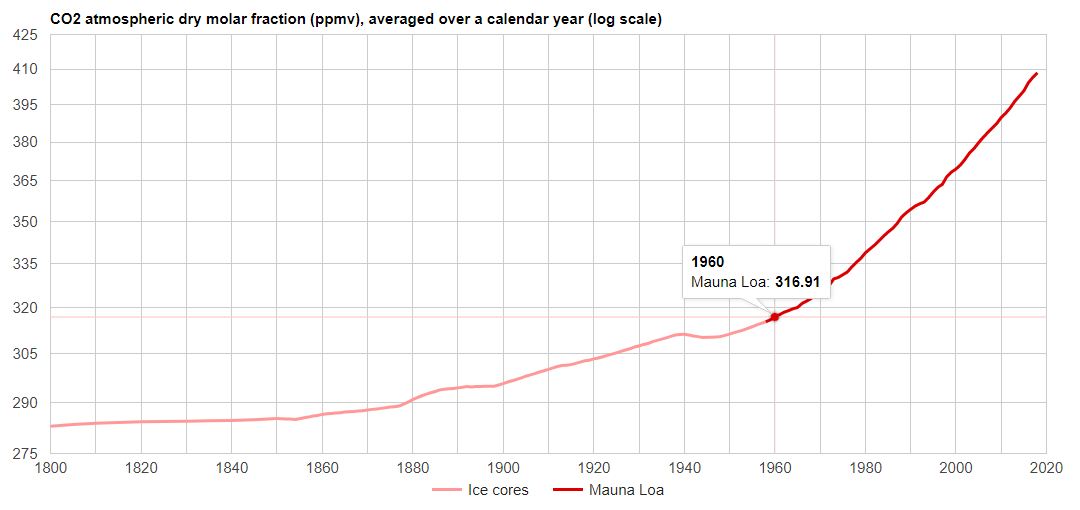Log-scale graph of atmospheric carbon dioxide (CO2) levels, 1800–present
(“CO2 forcing”)
Because the effect on temperatures from rising atmospheric CO2 levels diminishes logarithmically, this log-scale graph of CO2 level can be considered to be a graph of “CO2 forcing.”
As you can see, the growth in CO2 forcing has been monotonically increasing for more than two-thirds of a century (since about 1950). It accelerated substantially through the 1950s and 1960s, but the growth rate in CO2 forcing has risen barely more than linearly since about 1975 (note how straight that section of the graph is).
The growth in CO2 forcing will probably fall below linear over the remainder of the 21st century, for two reasons:
1. There is evidence that as CO2-driven “greening” increases plant coverage, the rate at which the terrestrial biosphere removes CO2 from the air is accelerating. Here's a paper about it, and a good discussion of that paper.
2. Additionally, when mankind's energy production begins its eventual transition from fossil fuels to other sources (probably nuclear, perhaps thorium fission and/or fusion), the result will be a slowing of the historically exponential growth rate of CO2 emissions (which has totaled 66% in 26 years, which is approximately +2.0% per year), and a consequent slowdown in CO2-driven warming of the Earth's climate.
